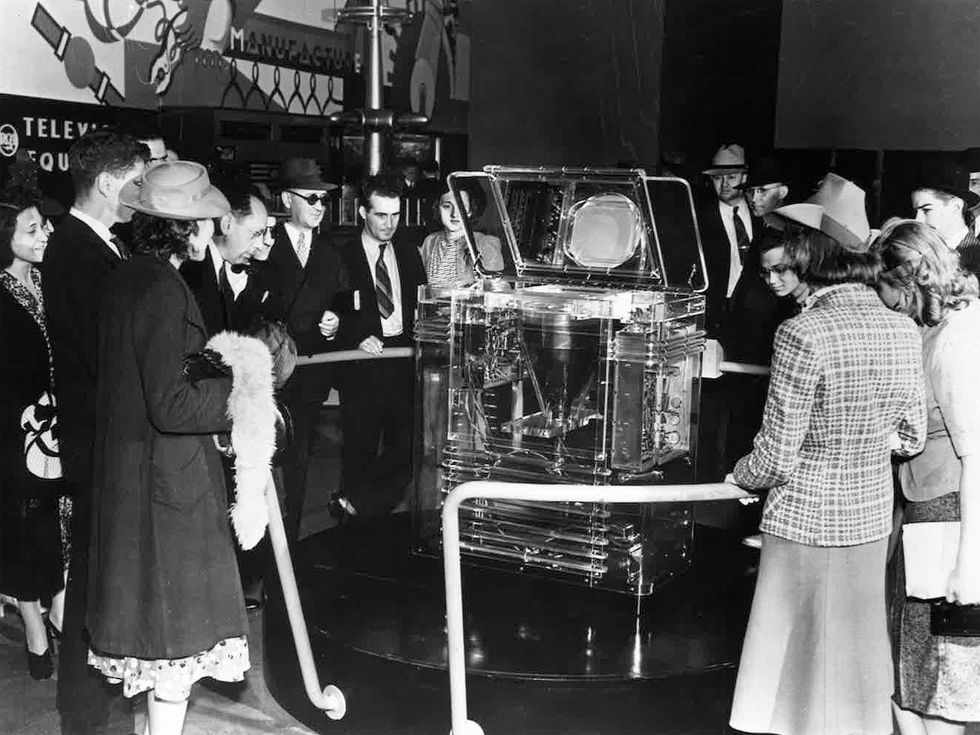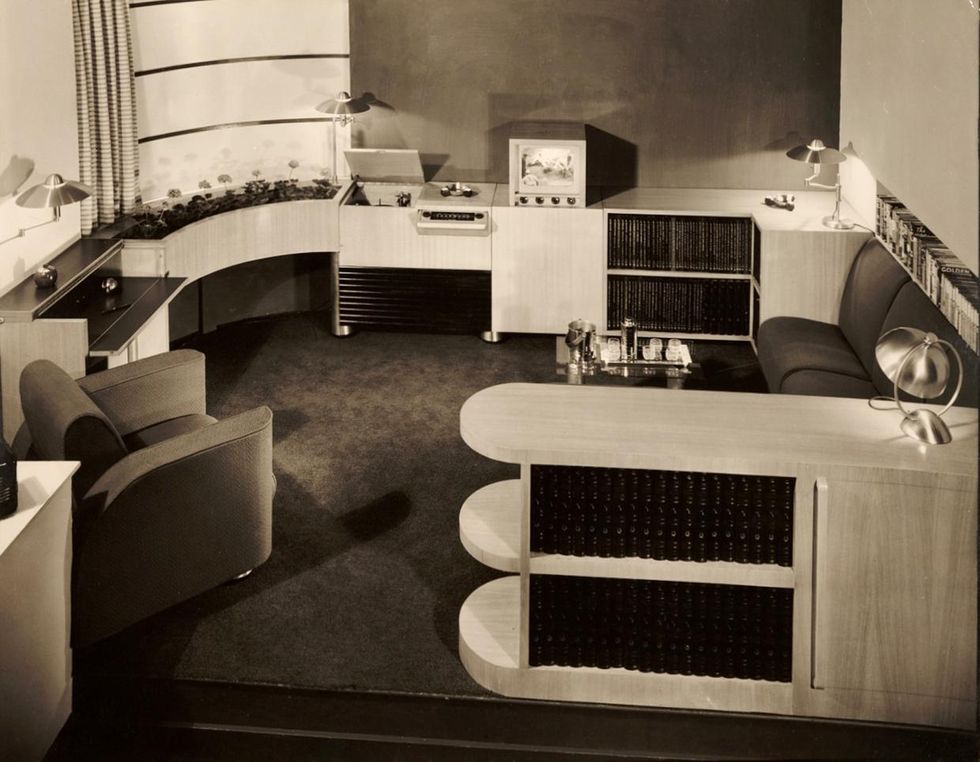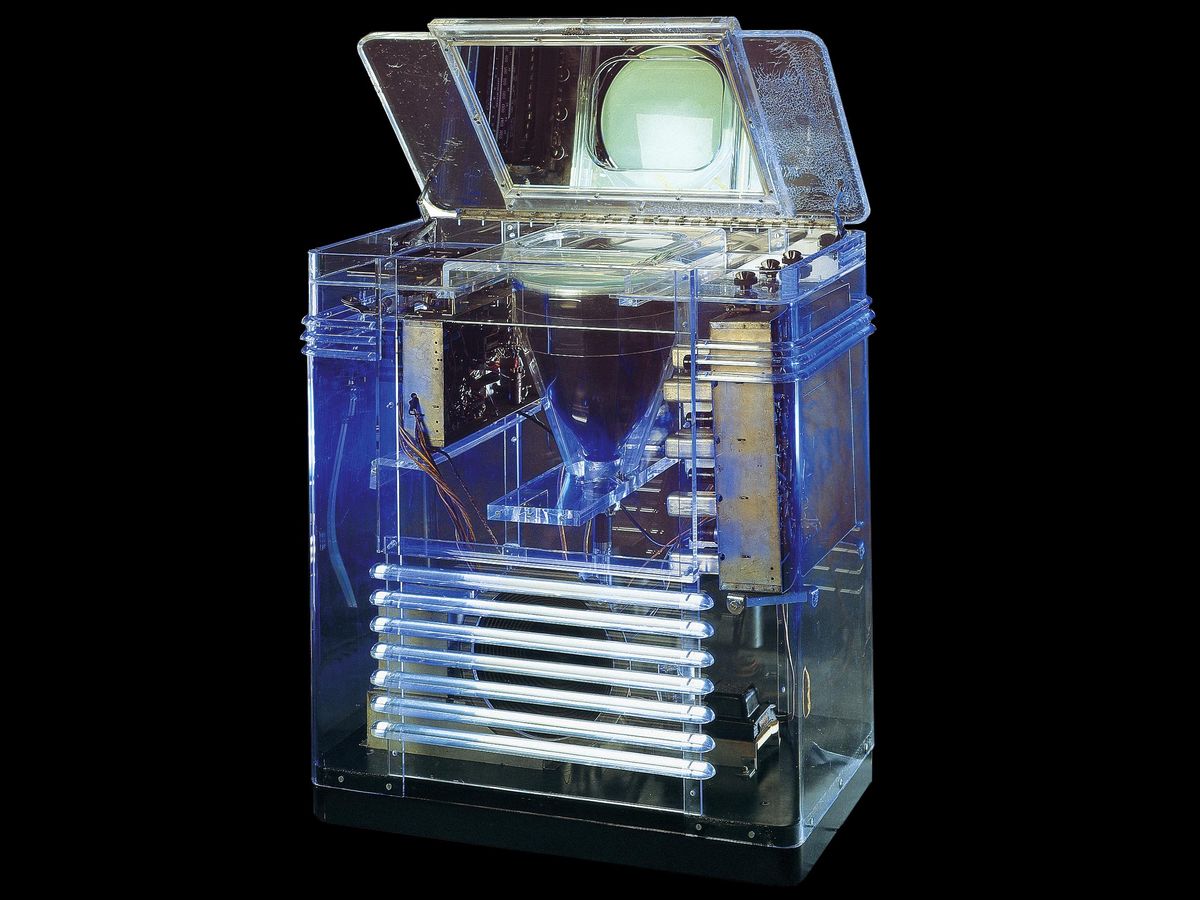On 20 April 1939, David Sarnoff, president of the Radio Corporation of America, addressed a small crowd outside the RCA pavilion at the New York World’s Fair. “Today we are on the eve of launching a new industry, based on imagination, on scientific research and accomplishment,” he proclaimed. That industry was television.
RCA president David Sarnoff’s speech at the 1939 World’s Fair was broadcast live.www.youtube.com
Sarnoff’s speech was unusual at that time for the United States simply because it was the first time a news event was broadcast live for television. Although television technology had been in development for decades, and the BBC had been airing live programs since 1929 in the United Kingdom, competing technologies and licensing disputes kept the U.S. television market from taking off. With the World’s Fair and its theme of the World of Tomorrow, Sarnoff aimed to change that. Ten days after Sarnoff’s speech, the National Broadcasting Corporation (NBC), a fully owned subsidiary of RCA, began a regular slate of television programming, beginning with President Franklin Delano Roosevelt’s speech officially opening the fair.
RCA’s Phantom Teleceiver was the TV of tomorrow
The architecture of RCA’s pavilion at the fair was a nod to the company’s history. Designed by Skidmore & Owens, it was shaped like a radio vacuum tube. But the inside held a vision of the future.
Entering the pavilion, fairgoers encountered the Phantom Teleceiver, RCA’s latest technological wonder. This special model of the TRK-12 television receiver, which today we would call a television set or simply a TV, was housed in a cabinet constructed from DuPont’s new clear plastic, Lucite. The transparent case allowed visitors to inspect the inner workings from all sides.
An unusual aspect of the TRK-12 was its vertically positioned cathode-ray tube, which projected the image upward onto a 30.5-centimeter (12-inch) mirror on the underside of the cabinet lid. Industrial designer John Vassos, who was responsible for creating the shape of RCA’s televisions, found the size of that era’s tubes to be a unique challenge. Had the CRT been positioned horizontally, the television cabinet would have pushed out almost a meter into the room. As it was, the set was a heavyweight, standing 102 cm tall and weighing more than 91 kilograms.The image in the mirror was the reverse of that projected by the CRT, but Vassos must have decided it wasn’t a deal breaker.
According to art historian Danielle Shapiro, the author of John Vassos: Industrial Designer for Modern Life, Vassos drew on the modernist principles of streamlining to design the cabinetry for the TRK-12. In addition to contending with the size of the tube, he had to find a way to dissipate its extreme heat. He chose to integrate vents throughout the cabinet, creating a louver as a design motif. Production sets (meaning all the ones not made out of Lucite for the fair) were crafted from different shades and patterns of walnut with stripes of walnut veneer, so the overall look was of an elegant wooden box.

(If you want to see the original World’s Fair TV, it now resides at the MZTV Museum of Television, in Toronto. A clever replica, built by the Early Television Museum with an LCD screen instead of a vintage cathode-ray tube, is at the ACMI in Melbourne, Australia.)
The TRK-12 wasn’t just a TV. It was the first multimedia center. The cabinet housed the television as well as a three-band, all-wave radio and a Victrola switch to attach an optional phonograph, the sound from which would play through the radio speaker. A fidelity selector knob allowed users to switch easily among the different entertainment options, and a single knob controlled the power and volume for all settings. On the left-hand side of the console were two radio knobs (range selector and tuning control), and on the right were three dual-control knobs for the television (vertical and horizontal hold; station selection and fine tuning; and contrast and brightness).
In 1939, TV was still so novel that the owner’s manual for the TRK-12 devoted a section to explaining “How You Receive Television Pictures.”
Although the home user could select any of five different television stations and fiddle with the picture quality, a bold-faced warning in the owner’s manual cautioned that only a competent television technician should install the receiver because it had the ability to produce high voltages and electrical shocks. TV was then so novel that the manual devoted a section to explaining “How You Receive Television Pictures”: “Television reception follows the laws governing high frequency wave transmission and reception. Television waves act in many respects like light waves.” So long as you knew how light waves behaved, you were good.
In addition to designing the television sets for the fair, Vassos created two exhibits to help new users envision how these machines could fit into their homes. When David Sarnoff gave his dedication speech, for example, only a few hundred people were able to watch it live simply because so few people owned TV sets. Shapiro argues that Vassos was one of the earliest modern designers to focus on the user experience and try to alleviate the anxiety and frenzy caused by the urban environment. His design for the Radio Living Room of Today blended the latest RCA technology, including a facsimile machine, with contemporary furnishings.
In 1940, Vassos added the Radio Living Room of Tomorrow. This exhibit, dubbed the Musicorner, included dimmable fluorescent lights to allow for ideal television-watching conditions. Foreshadowing cassette recorders and CD burners was a device for recording and producing phonographs. Tasteful modular cabinets concealed the television and radio receivers, not unlike some style trends today.

Each day, thousands of visitors to the RCA pavilion encountered television, often for the first time, and watched programming on 13 TRK-12 receivers. But if television really was going to be the future, RCA had to convince consumers to buy sets. Throughout the fair’s 18-month run, the company arranged to have four models of television receivers, all designed by Vassos, available for sale at various department stores in the New York metropolitan region.
The smallest of these was the TT-5 tabletop television, which only provided a picture. It plugged into an existing radio to receive sound. The TT-5 was considered the “everyman’s version” and had a starting price of $199 ($4,300 today). Next biggest was the TRK-5, then the TRK-9, and finally the TRK-12, which sold for $600 (nearly $13,000 today). Considering that the list price of a modest new automobile in 1939 was $700 and the average annual income was $1,368, even the everyman’s television remained beyond the reach of most families.
Part of a continuing serieslooking at historical artifacts that embrace the boundless potential of technology.
An abridged version of this article appears in the February 2023 print issue as “Yesterday’s TV of Tomorrow.”
Allison Marsh is a professor at the University of South Carolina and codirector of the university's Ann Johnson Institute for Science, Technology & Society. She combines her interests in engineering, history, and museum objects to write the Past Forward column, which tells the story of technology through historical artifacts.



